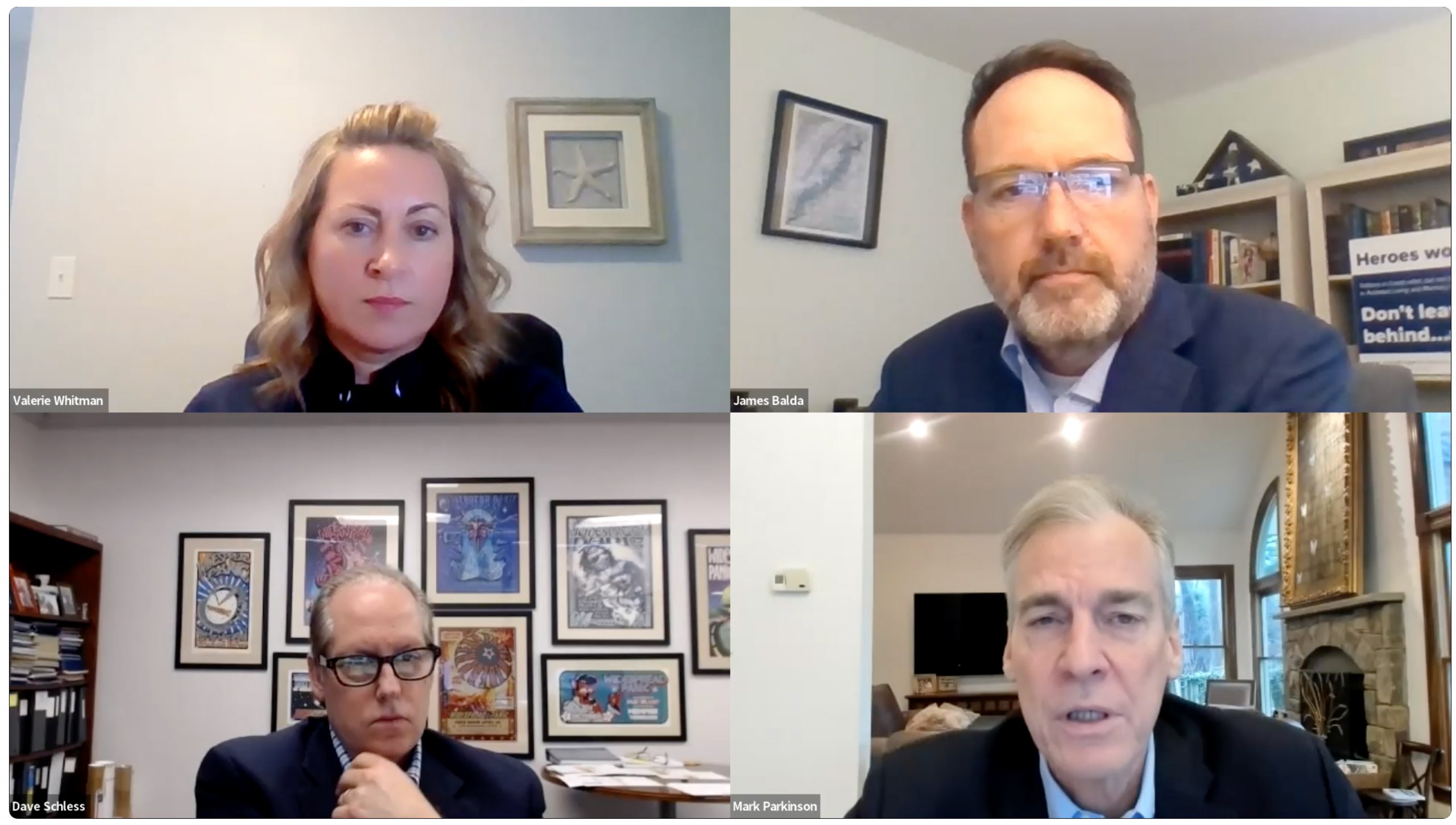The seniors housing industry is slowly and steadily regaining occupancy after hitting record lows during the height of the COVID-19 pandemic. New development, meanwhile, was itself stymied by supply-chain issues, labor shortages and worksite shutdowns as a result of the pandemic.
However, the latter issues have had a silver lining: Occupancy will have a chance to recover as fewer units will come online over the next few years.
“The slow growth of inventory has been helpful on the occupancy front,” said James Balda, CEO and president of industry association Argentum. “Long-term demographics and demand are going to drive investment. At some point in the coming years, we’re going to see development increase significantly.”
Balda made his comments during a webinar titled “Seniors Housing Policy Outlook: What Will Impact Operations, Investment & Development in 2022?” Held Thursday, Feb. 3, the panel included Mark Parkinson, president and CEO of the American Health Care Association and National Center for Assisted Living (AHCA/NCAL); David Schless, president of the American Seniors Housing Association (ASHA); and Valerie Whitman of seniors housing tech provider LeadingResponse, who moderated the discussion.
Whitman, whose company helps feed qualified leads to sales teams, noted that developers are coming to her over a year earlier than pre-pandemic. The reason is that concerns about fill-up have them thinking further ahead.
“Investors are coming to us even earlier on,” said Whitman. “Typically they’d come to us six to nine months from getting their certificate of occupancy. Now we’re seeing upwards of 18 months because there’s that fear of being able to lease up.”
While new development is currently restrained, all panelists agreed this will not last.
“Once you decide you’re going to build a building, the time between when you have the idea and when you open it up is two to four years,” said Parkinson. “Starting in 2025, the oldest boomers turn 80. There’s not going to be a ton of new inventory between now and then, but there’s going to be a lot more people who need the services. Once we get beyond this [disruption caused by COVID], the demographics speak for themselves.”
What’s more, capital sources and buyers alike also see this demand that is poised to surge, according to Schless. This should lead to readily available capital for developments and heightened activity in both sales and value-add transactions.
“The capital markets have really remained committed and robust for the spectrum of senior living property types. That’s very positive news,” said Schless. “On the transactional side, you’re seeing record numbers of transactions taking place. That’s also good news. That shows us that there is a desire to continue investing in all of these types of properties.”
“And it is not necessarily just new, ground-up development,” continued Schless. “We’ve got a lot of older stock — 30 to 40 years old — and you’re continuing to see investment capital going toward purchasing and making improvements to that stock. All of those are reasons to be optimistic.”
To watch the full webinar, click here.
— Jeff Shaw

